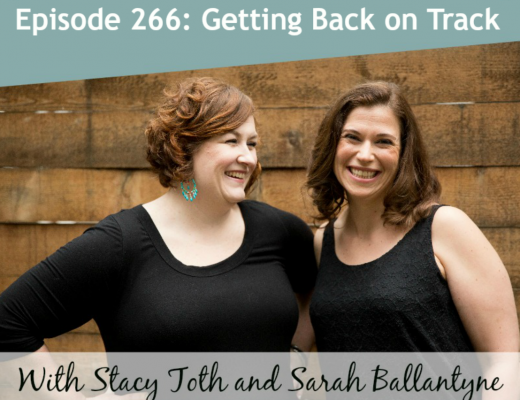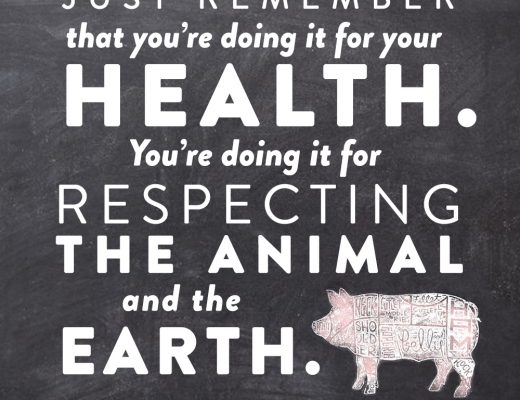Our fiftieth show!
Ep. 51: Integrating Paleo into School
In this episode, Stacy and Sarah share parenting advice on how to transition your kids to paleo. They provide tips on setting expectations at school, packing lunches, empowering your kids to make healthy food choices, and more.
Click the picture above to be taken to iTunes
or download and listen by clicking the PodBean player below
We’re now on Stitcher!
If you enjoy the show, please review it in iTunes!
The Paleo View (TPV), Episode 51: Integrating Paleo into School
- 0:00 – Introduction
- 1:19 – News & Views
- Sarah is back in the states! She is happy to be home, is back on her treadmill desk, and is also fighting a cold
- Stacy is feeling great and is loving the awesome energy her boys have been sharing lately
- Stacy went up to Pittsburgh this last weekend with Amy for Hayley’s bridal shower and it was incredibly classy – all the food was from her recipe books, which was such a loving thing to do
- The hosts of the party also created a newlywed game with per-recorded answers from Bill, which was very sweet and a cool twist on traditional bridal shower games
- Stacy also got to work out in Pork Belly Fitness, which is Bill and Hayley’s garage gym
- Sarah wants to know from Stacy, her pork expert, if she can use a salt and sugar cure to make bacon or does she have to smoke it?
- Stacy notes that without smoking the belly it won’t taste like bacon, but Sarah could easily make a smoker following the instructions on how to make a homemade smoker from Beyond Bacon
- Stacy recommends that if Sarah doesn’t want to make the smoker she should use the Cracklin’ Pork Belly recipe from Beyond Bacon – Stacy wouldn’t cure it if she isn’t going to smoke it, she would braise it
- Mickey from Autoimmune Paleo has a video on how to make the smoker from Beyond Bacon
- In this week’s show Stacy and Sarah are going to answer some questions that are representative of a general topic and questions they get frequently – if they don’t specifically address your question, please don’t let your feelings be hurt, there are a lot of questions that come in
- Stacy and Sarah polled the Paleo Parents Facebook page to see what folks most wanted to discuss this week, and the common theme was people wanting to hear about preparing for schools, handling the holidays, and dealing with difficult times – a practical show filled with a lot of tips
- Next week will be the ‘Best Of’, 1 year anniversary show
- School lunches was the first topic of The Paleo View, so it is fitting to circle back on the subject a year later
- Sarah’s oldest daughter started school the Wednesday before the podcast went live and Sarah had the meet-up with the teacher to outline her daughter’s dietary requirements
- Last year Sarah felt like she was making up the system as she went along, but this year she feels like she has the system down for how to approach the whole ‘this is how my daughter eats’ discussion
- When Stacy was on The Science of Slim recently she chatted with Jonathan Bailor about the importance of empowering your children, and the same principles from that discussion apply on how to prepare your kids for making their own choices while at school, parties, etc.
- Stacy reminds folks that this process takes time, just like it does for adults, your kid has to learn how to adapt their life in their own time
- Sarah notes that it has been a long road to reach the point where a Larabar serves as a “treat” for her kids, they took it in baby steps and stayed persistent
- 19:16 – Science with Sarah
- In this week’s show Sarah wants to revisit one of the basic principles of the paleo diet to discuss saponins
- Saponins are a chemical that have detergent like properties, meaning they can naturally make oil and water mix
- They are naturally found in all plants, and this is where you hear folks say we shouldn’t eat xyz because they contain saponins
- Just like lectins are a broad class of proteins, the same is true with saponins – some are perfectly safe to consume and some can be problematic and trigger gut problems
- Some saponins may be necessary to aid in our digestion and absorption of nutrition from our food
- These “good” saponins make small pores and fall apart fairly easy
- The problematic saponins form larger pores or more stable pores, because it changes the dynamic of the cell membrane changing its dynamic to do things
- There are other reasons to not eat legumes, but this is one of the key reasons why some people can’t eat nightshades, which is why folks with an autoimmune condition, leaky gut or inflammation can’t eat them
- Saponins are very good at getting into the blood stream and stimulating the immune system
- The main point that Sarah wants to hit home is that not all saponins are bad, the point is to avoid saponins that can really cause problems and lead to a leaky gut
- 27:54 – Q&A
- Lora – What is the best approach to informing my son’s daycare about his diet and our preferences on how he is fed?
- Sarah informed her daughter’s teacher when she started kindergarten that her daughter can’t tolerate gluten, and left it that cut and dry
- Sarah didn’t provide a doctor’s note, however, it is noted in her daughter’s medical files why she cannot tolerate gluten
- Cole went to a subsidized daycare before Matt made the switch to a SAHD, and Matt and Stacy learned that they could request to opt out of the subsidized program and to pay the difference
- Stacy notes that you can also seek a doctor’s note as Sarah mentioned, but it is very common for parents to avoid wheat and dairy these days so it shouldn’t be too difficult to share your observations with your doctor to obtain a note
- (35:24) Becca – how do I feed a brood of boys without taking up permanent residency in my kitchen? How do I help my sons deal with the social stigma they perceive from their diet?
- Stacy notes that this is a normal thing parents deal with when there are multiple boys in the house, despite whatever one’s dietary style is
- What Stacy and Matt have done is instructed the boys to always partner a protein with their snacks and meals, once a week they make hard-boiled eggs and they have them eat an egg when grabbing fruit or other kind of snack
- Matt and Stacy also get a lot of cured and “processed” meat from high quality sources like USWM – hot dogs, meat sticks, Paleo Kits, Primal Pacs, Epic Bar
- They empower the boys that when choosing something with meat/protein that they don’t need to ask for permission, if it is something other than protein they need to ask
- Matt and Stacy’s boys have been taught how to make their own protein snacks
- Coconut milk smoothies are also very helpful with hungry kids – you can throw in egg yolks for protein, freeze bananas and add those, add in nut butter or cocoa powder – and this is something they can do on their own
- You may need to also look into more satiating meals – if the kids are constantly asking for snacks they are either bored and that needs to be dealt with, or the meals aren’t keeping them satisfied or they may need bigger portions at meals
- Sarah adds that sardines are a great snack option as well
- Sarah doesn’t run into this issue often, however, her girls don’t often eat enough at supper time because they eat until they are no longer starving and then want to go do other things, so they get hungrier sooner
- Sarah has the same rule as Matt and Stacy that snacks require protein
- Nuts aren’t a terrible option, but perhaps find more affordable options like cashews
- Here are some options for “cheats” to help bridge your children to paleo – do not worry about ketchup – find an option without HFCS, also don’t stress over mayo – find some options that use sunflower oil (not the best, but you have to find the compromises you are willing to make)
- Stacy notes that you have to get your kids on board before offering broth or homemade ketchup and mayo – try to make them “normal” looking lunches with deli meat, sandwiches on paleo bread or coconut wraps (there are various brands of bread you can chose from, or make your own – or check for gluten-free bakeries in the area)
- Stacy suggests taking your kids shopping to see what they prefer to eat – children love picking out their own things, it makes them feel in control
- Things like sweet potato chips or coconut milk yogurts are good gray area foods to include from time to time to help their lunches feel “normal”
- Sarah had her oldest daughter sit down and make a list of her preferred vegetables, fruits, fats, proteins, and treats and identified the things that are easy to pack – they kept the list on the fridge and it helped Sarah be mindful of what her daughter prefers
- Sarah notes that it was key to have that discussion to see what her daughter prefers and to talk about healthy choices
- When Sarah and her daughter had this talk again in preparation for this year’s school year, she noticed how drastically the list grew
- Sarah noted that having that dialogue changed the dynamic, it was her daughter making decisions for herself
- Stacy notes that when in doubt, pack bacon
- Lora – What is the best approach to informing my son’s daycare about his diet and our preferences on how he is fed?
- 1:03:33 – Paleo Parenting
- Orquidea – What is the best way to introduce kids to the paleo diet?
- Stacy points out that her kids knew their lifestyle as gluten-free/dairy-free, eat like a dinosaur, healthy choices, no processed foods, vegetables and meat
- Stacy notes that coining it as the paleo diet labels it as a diet and her kids are not on a diet
- When you are first introducing the new path, do it in a way that helps them understand that this lifestyle is to help them grow and be strong
- In Eat Like a Dinosaur there is also a section on how to talk about this with your kids
- Create some mimic foods to help your family during the transition – paleo-ized goods (granola, cookies, bars, etc.)
- Note that you are trying it as a family and set a time frame to it to test it and see how everyone feels at the end
- Allow yourself some time to wean off of the foods from your current diet
- There are lots of paleo cookbooks and bloggers that offer transition recipes
- You want the lifestyle to be something that tastes good, doesn’t make them feel deprived, something that helps their bodies heal, grow and be strong, but sets them up for success socially and emotionally
- Sarah reminds folks that her family transitioned very slowly, her husband in particular struggled with the adjustment
- Sarah didn’t worry about the foods that they ate during the transition because she knew it was still an improvement from where they had been
- Sarah’s family doesn’t call it a paleo diet, they refer to it as gluten-free and simply know that they don’t eat dairy – with her youngest daughter they phrase it as avoiding foods that hurt her stomach
- Sarah’s family never approached it as a challenge, they just started doing it and they did it all in baby steps
- Talk with your kids about why, think about them while you are cooking to prepare the things they like and to help them not feel deprived
- When you are transitioning it can be a comfort to know that food can still taste good and you can still have treats – showing kids that food will still taste good is one of the most important things to get them on board
- Stacy allowed Cole to occasionally buy lunch at school and they looked at the calendar and planned ahead to the meals that he preferred, they went from two days a week to eventually one and he eventually made the connection that those “cheats” didn’t make him feel good and through his own choosing he decided to give up buying a lunch at school
- FYI, if you really miss Chinese food, look at the recipes in Gather, Beyond Bacon, and Paleo Indulgences, you can also try finding a Thai restaurant that has soy and wheat free options
- Sarah received a request from a reader to share instructions on how to leave a review on iTunes
- Download the podcast app onto your smartphone or tablet
- Subscribe to the show, which gives you instant access when a new show is downloaded
- Under ‘My Podcasts’ go into settings, turn your subscription on
- Go back to the iTunes store, pull up The Paleo View tab – there you will find a review tab
- It is easier to review directly through iTunes on the computer
- Email Sarah or Stacy through their contact forms if you are running into a specific problem and they will help
- If you loved this show’s theme, go back and listen to the first show since the topic was in the same category
- 1:14 – Outro
Support us by shopping on Amazon (below) or shopping through links on our sidebars, please!
- Orquidea – What is the best way to introduce kids to the paleo diet?





